Winter Container Favorites to Mix & Match
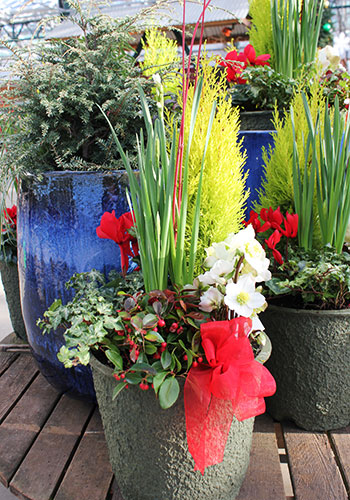
After the glorious abundance of summer annual blooms, the options for beautiful winter containers are too often underrated or overlooked. As a result, too many containers miss out on their potential to add joy and inspiration to the darkest season of the year, as they end up sitting bare and empty on our porches.
While it’s true that there are fewer options available this time of year than in the height of spring or summer, many gardeners are surprised to learn just how many hardy varieties will be happy to brighten a doorstep or patio all winter long. And the constraints of winter container gardening can also be their own source of inspiration.
Here are 5 basic principles of winter container design to get your imagination going, & some suggestions for how to make them work for you:
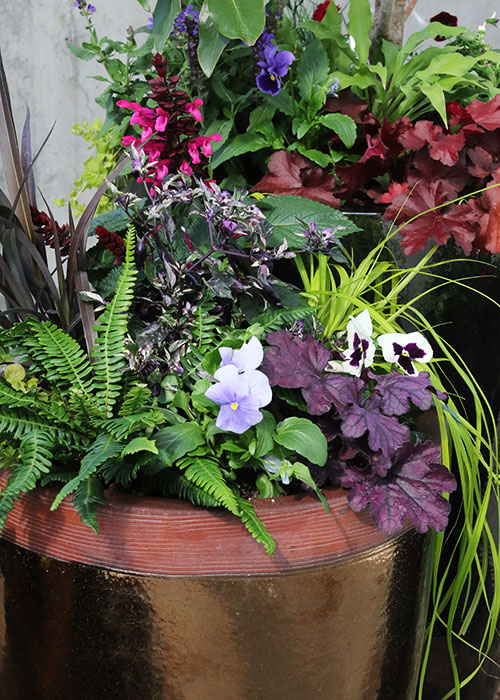
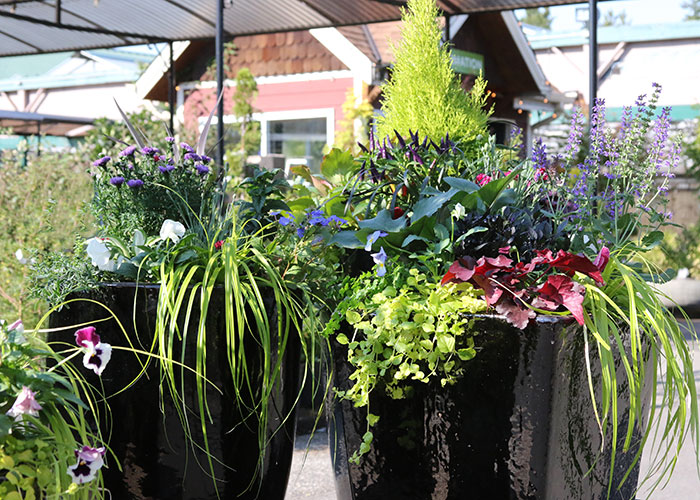
1. Don't Stress About Sun
Here’s a uniquely fun thing about winter containers: you get to mix and match plants that like different amounts of sunlight. When plants are robustly growing through the spring and summer, they’re very sensitive to how much sunlight they get, so there’s a big difference between what plants will work on a north-facing patio vs. a west or south facing one.
But in the winter, you get to forget about all of that. Plants are growing slowly if at all anyway, and there isn’t enough light available even in the sunniest spots to bother shade-loving plants. As long as they’re getting a little sun on their leaves on those days that the sun makes an appearance, any hardy plant will do fine just about anywhere.
So go ahead and stick that shade-loving fern in with all the others on your west-facing patio. Just make sure that you move it to another location or find it a new home before it fries in next summer’s sun.
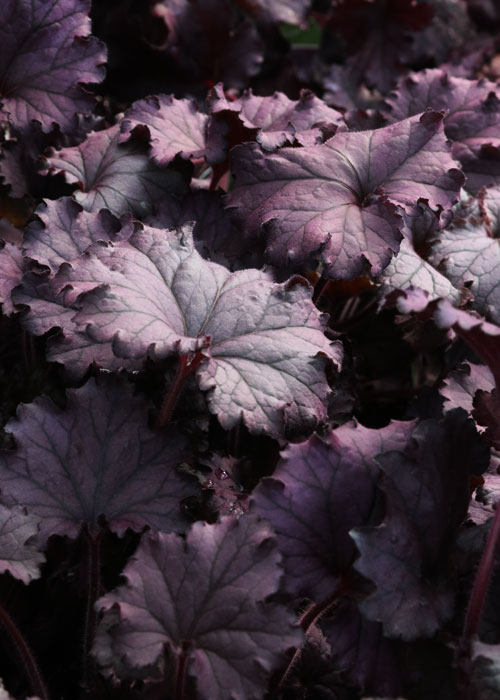
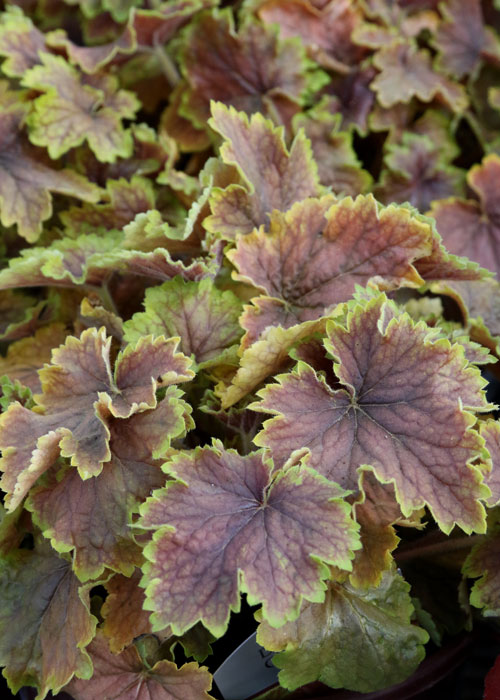
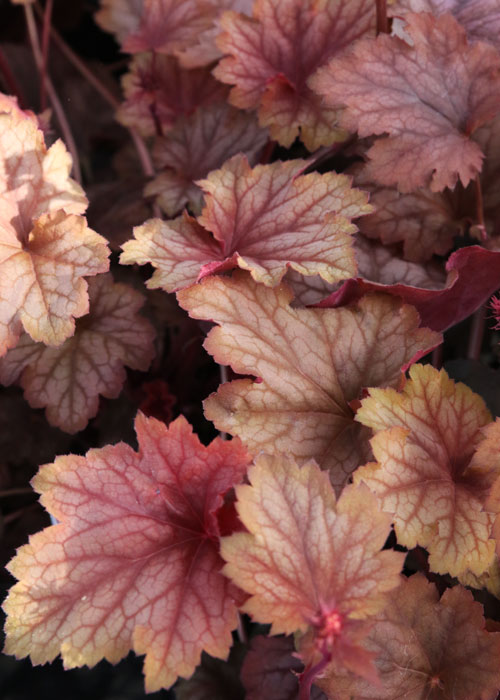
2. Foliage Takes Center Stage
For a small container, one or two interesting foliage specimens might be plenty. For larger containers, you can of course experiment with as many varieties as you want (don’t let us stop you!), but we suggest multiplying a few well-chosen elements in a repeating theme.
When picking out your evergreen foliage plants, the key is to look for interesting contrasts in leaf shape, size, and texture. For example, you could contrast a wide, spade-shaped bergenia (pig squeak) leaf with a delicately serrated fern or a wispy sedge.
Some foliage options even offer contrasting colors. Heucheras (coral bells) are a favorite in every season because of their uniquely colorful leaves, available in a rainbow of colors from nearly-black purple to vibrant orange. Any variegated evergreen can help lighten up a container. Dusty miller, with its distinctive silver foliage, makes an excellent winter annual option.
THRILLERS
Different heights and layers add interest to containers even when you’re working with winter’s somewhat limited palette.
Add height with grass-like “thrillers” like cordyline or carex, or get creative with small shrubs and trees. Coprosma (mirror plant) is great for containers that are at least slightly protected from the elements because of its glossy, colorful leaves. Lemon cypress, with its strikingly bright, lime-green foliage, is another very popular choice.
Some gardeners like to plant young shrubs or trees in a container for the winter, then transplant them out into the garden or a larger container where they can eventually grow to their full size.
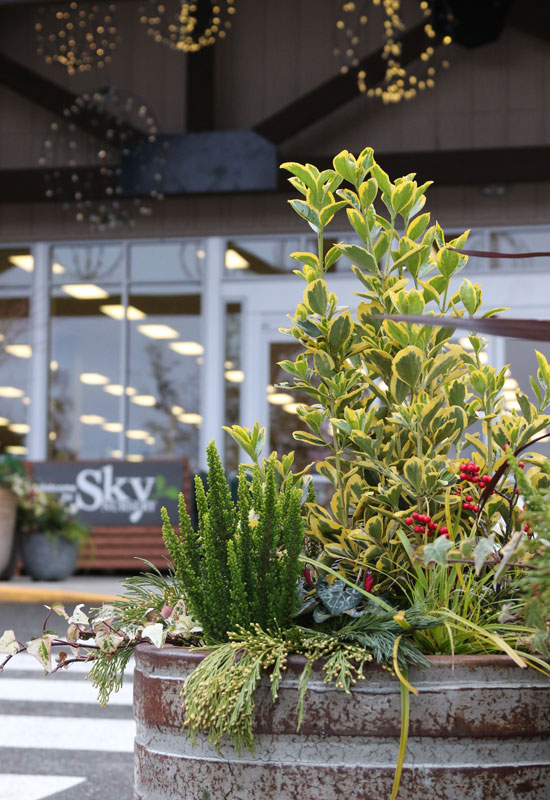
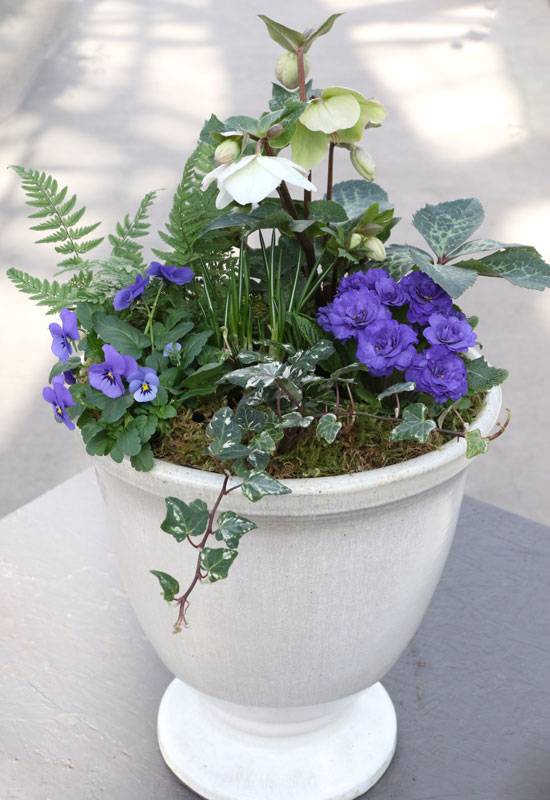
SPILLERS
Create a cascading effect with “spillers” like vinca, ivy, and wirevine. These tough evergreen trailing plants can make it through just about any winter weather, and they come in a variety of variegated and solid colors.
These plants are often so robust and vigorous that we recommend keeping them confined to containers so that they don’t take over your garden beds!
3. Add a Touch of Color
Whereas summer containers are often a glorious riot of color, some of the best winter containers embrace the beauty of simplicity. A few well-placed winter blooms or bright berries against a backdrop of well-chosen foliage plants creates a striking effect that is perfect for this quiet season.
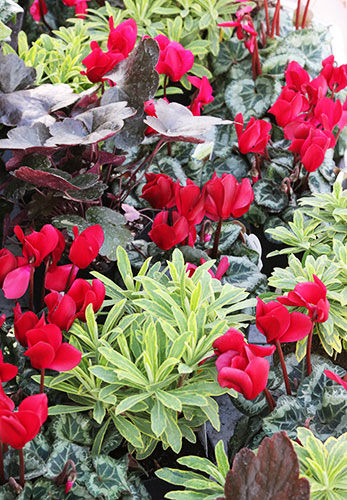
Cyclamen are perhaps the showiest choice for winter blooms. Since they stand taller than pansies or primroses, they can even be used as a centerpiece for a small container. The color choices include a range of pinks, reds, and purples, as well as snowy-white.
Cyclamen don’t mind our average Pacific Northwest winter temperatures, but they won’t always make it through a freeze. We recommend tucking them into your containers plastic pot and all, rather than transplanting. That way, on those occasions that our temperatures dip below freezing, you can simply lift them out and take them inside for the night.
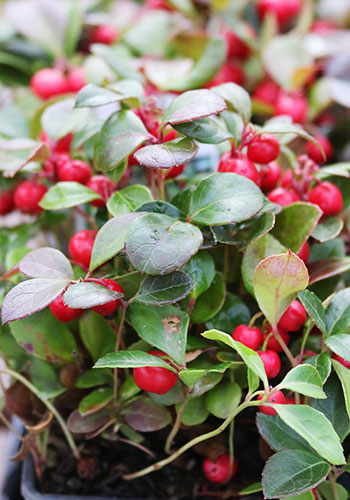
Primroses are another popular choice for annual color, especially for the late winter and early spring. They come in lots of bright and fun colors, and seem to add instant cheer to any container.
Keep in mind, the best selection of primroses tends to arrive later in the winter.
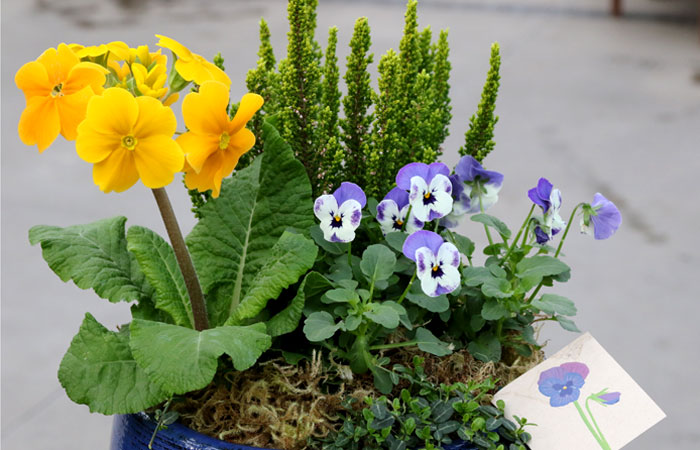
Pansies and their dainty cousins, violas, are always a great option, and they offer the flexibility of a huge variety of both warm and cool colors to choose from. Fun fact: “winter” and “spring” pansies are the same thing; the only difference is the marketing. No matter what’s on their tag, these hardy annuals bloom throughout the fall, winter, and early spring.
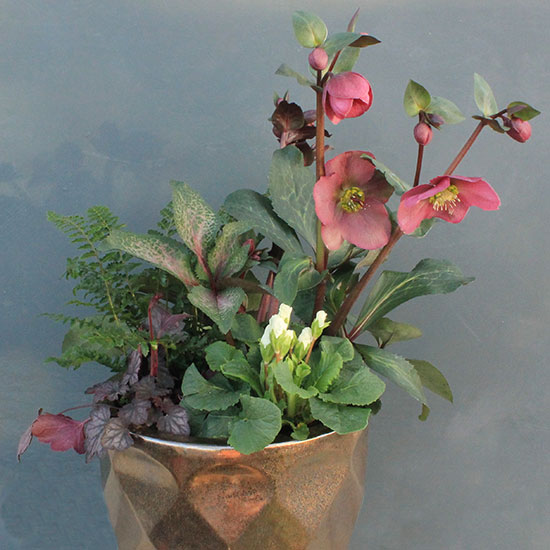
Hellebores are evergreen, winter-blooming perennials that are equally attractive in containers and landscapes. Their large, white or mahogany midwinter blooms and broad, dark green leaves contrast beautifully with bright green scotch moss and with delicate ferns.
Berries can offer an additional source of color in this season when blooms are scarce. Wintergreen is nothing if not stately and traditional with its contrasting dark green foliage and bright red berries. For those who have had enough of red and green, there are also pink-fruited wintergreens.
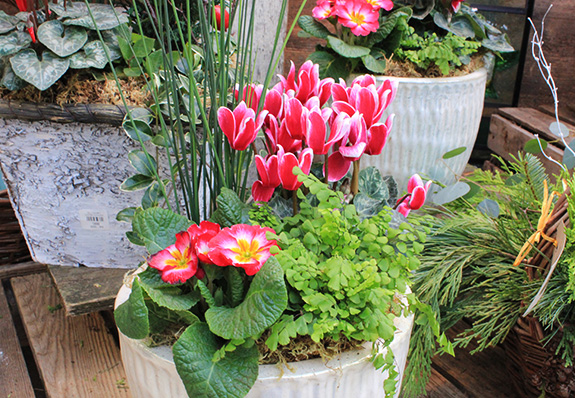
4. Experiment with Boughs, Branches & Baubles
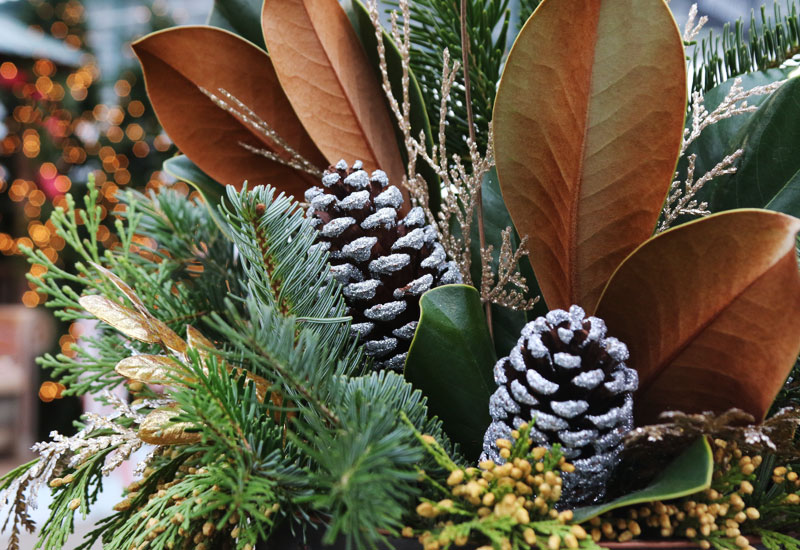
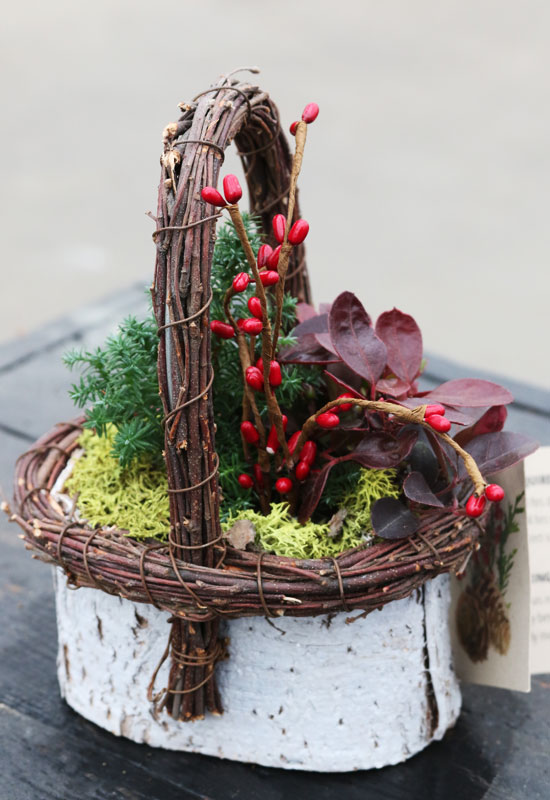
As if all those living plant options weren’t enough, cut boughs and branches can further spruce up winter containers. Evergreen boughs will keep their color for a long time in cool winter weather, so you can simply tuck them in among your plants.
Curly willow and red or yellow twig dogwood branches also make beautiful additions, and they can be used as alternative “thrillers” if evergreen foliage options aren’t quite meeting your needs.
You may also want to experiment with non-organic elements like outdoor ribbons, bows, and ornaments. A few baubles can make a simple arrangement instantly festive and fun.
5. Keep it Simple
Remember: Create a foundation with a couple of foliage choices in complimentary colors and textures and at least one “spiller” for a cascading effect, then add in one or two pops of color to catch the eye.
Fun Foliage Thrillers, Big & Small:
- Heuchera
- Ferns
- Carex
- Scotch moss
- Cabbage & Kale
- Heathers
- Chief Joseph Pine
- Euphorbia
- Wilma Goldcrest Cypress
Cascading Spillers:
- Vinca
- Creeping Jenny
- Ivy
- Wire Vine
A Pop of Color to Fill:
- Pansies and violas
- Cyclamen
- Hellebores
- Wintergreen
- Primroses
- Camellia
Optional Ornamentals:
Cut boughs, branches & more
- Incense Cedar
- Fir Branches
- Curly Willow
- Evergreen Holly
- Winter Berry
- Red Twig Dogwood
- Cones for Texture
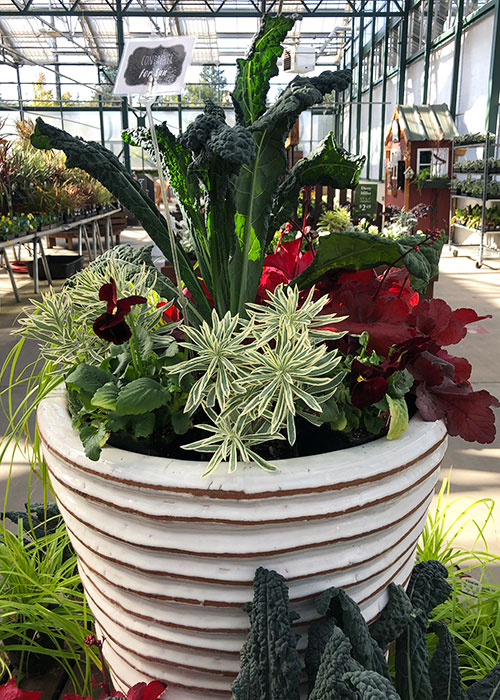
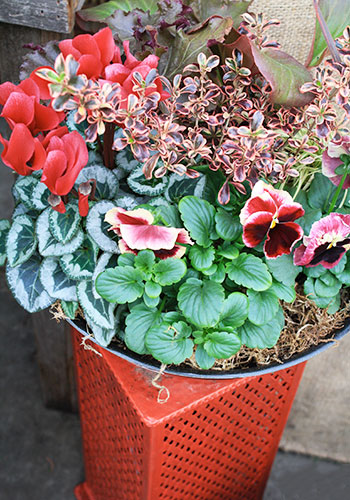
No matter what elements you choose, or how you mix and match them, winter containers can add a spark of life and joy through the coldest and darkest months. And they serve as vibrant reminders that there’s always something beautiful for gardeners to enjoy, every season of the year.
Check out these articles for more ideas:
